In this first of a three-part series documenting my recent visit to the Rainbow Nation – South Africa, I’ll take you on a trip to two of South Africa’s largest cities – Johannesburg and Durban.

The sun was just setting as I got off the plane at OR Tambo International Airport, and as I left the airport it was pitch dark. Even in the darkness as we drove down, as I got glimpses of Johannesburg and the lights in the distance, I knew I was falling in love. Falling in love with South Africa’s many vibrant colours, falling in love with the misty fragrance in the air, and most importantly falling in love with the warm and smiling faces of the people who make up this beautiful country. Over the next ten days, as I explored South Africa’s Kwazulu-Natal and Mpumalanga regions, the love affair intensified further.
Even though Johannesburg (or Jo’burg, as it’s affectionately called) serves as a major point of entry into the country, most tourists bypass the city for favour of the wilderness. If Joburg is glitzy and commercial, Durban on the other hand exudes a far more subdued charm, but it’s worth a visit for the strong Indian connect it holds. Both cities can be explored in fairly short amounts of time, if your itinerary doesn’t permit a longer stay. Here is my 24 hour guide to Johannesburg and Durban respectively.
24 Hours In Johannesburg
While Joburg is not one of the capital cities of South Africa, it is the largest and most populated. It was the epicenter of the country’s ‘Gold Rush’, resulting in tens of thousands of immigrants flocking to the country and making it their home. Johannesburg was also the epicenter of the Apartheid movement, birthplace of Nelson Mandela and home to the thriving SOWETO township. This makes Joburg a melting pot of culture and the city is a perfect window to look into South Africa’s troubled past. Here’s how you can spend a day in Johannesburg, understanding the South African way of life better –
“To be free is not to merely cast off one’s chains but to live in a way that respects and enhances the freedom of others.” ~ Nelson Mandela
Morning at the Apartheid Museum
Apartheid was the system of racially segregating people of colour, and was rampant in South Africa from 1948 right up till the early 1990s. The Apartheid Museum is a must visit while you’re in Joburg to understand the life and times of people of colour in South Africa during the apartheid period.
You are immersed into an interactive experience right at the entrance, with separate ticket stubs for the ‘Whites’ and ‘Non-whites’. (The whites are offered an easier way in, while the non-whites are made to trudge up the steps.) There are plenty of short films, pictures and artefacts highlighting important events of interest and narrating individual stories of the people who lived through that difficult time. The museum is extremely moving and you can’t help but shed a silent tear, especially the section where you get to step into a real-life prison cell.
Pro Tip: Don’t forget to check out their temporary exhibit section, that highlighted the life and time of Nelson Mandela when we visited.

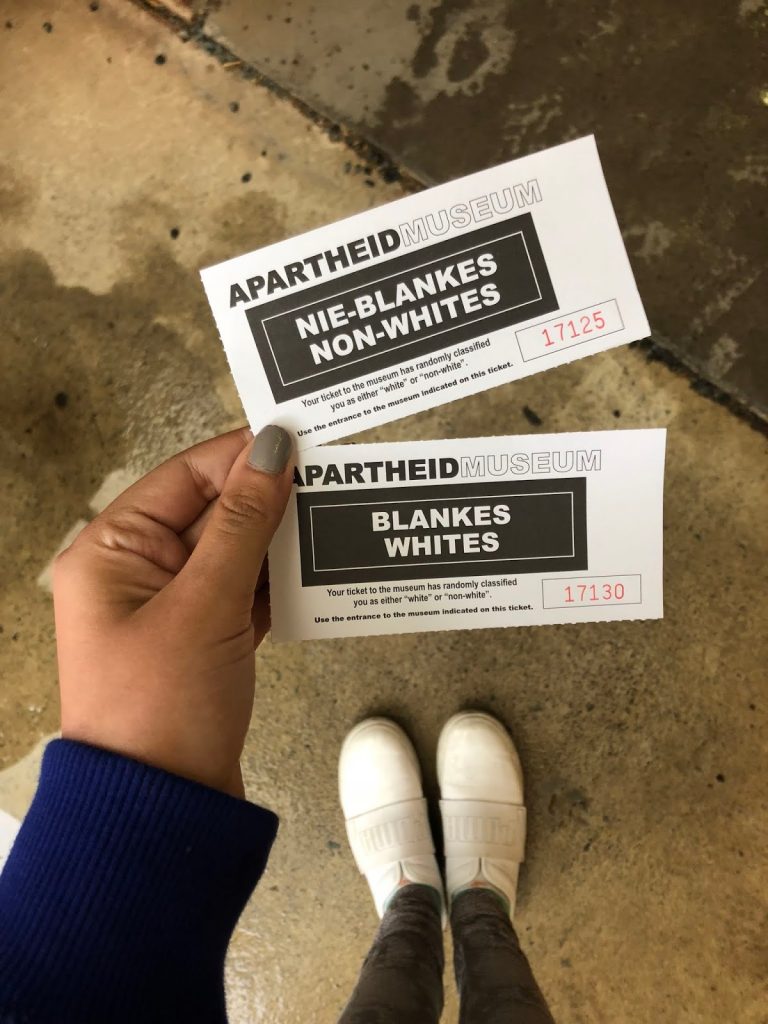
A Half Day Walking Tour of Soweto
SOuth WEstern TOwnship or Soweto is where majority of Johannesburg’s Black residents were forced to relocate to during the apartheid movement, away from the White suburbs. The streets of Soweto are filled with tales of struggle and valour, making this suburb an important landmark in the country’s freedom struggle.
Spend some time ambling down Vilakazi Street, the only street in the world to house two Nobel Peace Prize winners – Archbishop Desmond Tutu and Nelson Mandela. While Tutu’s home is not open for public viewing, the latter is thronged by tourists all throughout the day. I’d strongly recommend spending some time inside Mandela’s home if you’re interested in knowing the life and time of this great man better. Don’t miss spotting his ex-wife Winnie Mandela’s now defunct restaurant right opposite their home. A short walk ahead is the Hector Pieterson memorial, a shrine to the young boy who was shot during the 1976 peaceful student uprising in Soweto.
Fun Fact: Our tour guide Charles educated us with an alternative name theory. On being asked to relocate homes a lot of the locals would exclaim, ‘So where to?’, which later got tweaked into a shorter phrase aka ‘Soweto.’
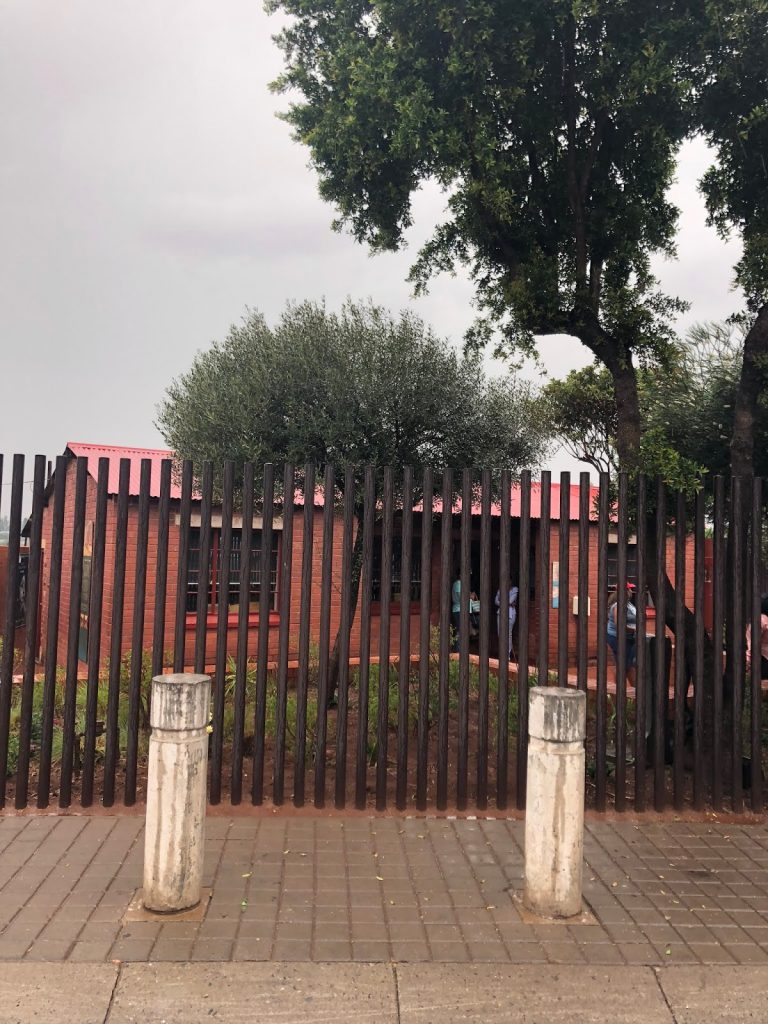
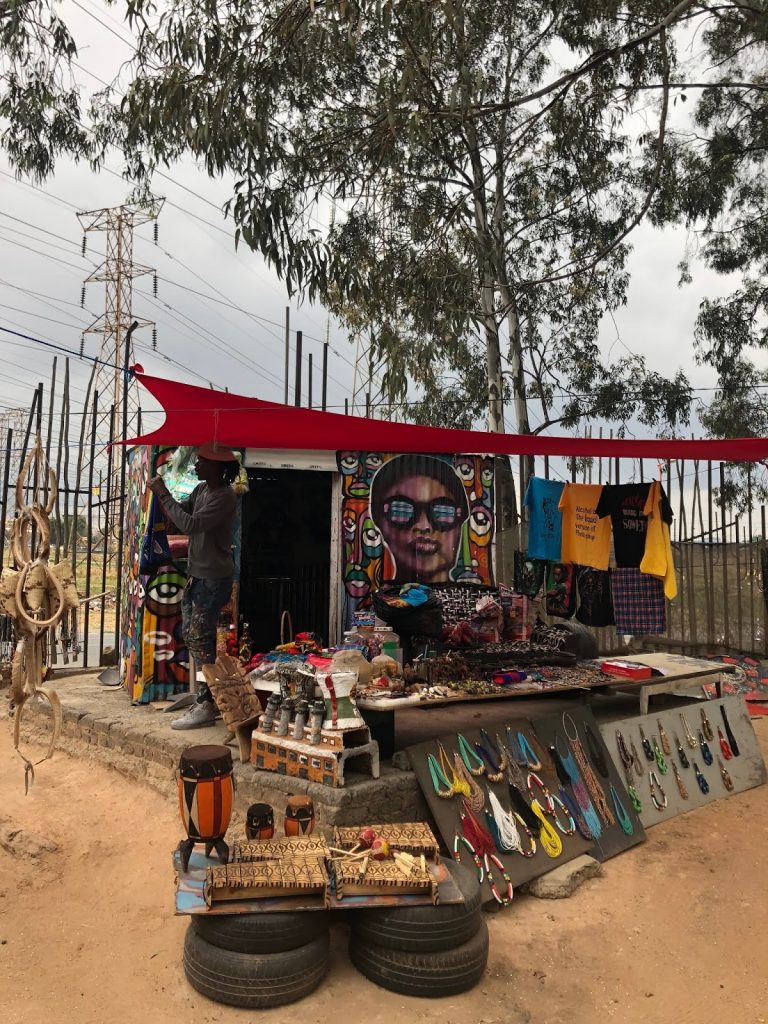
Adventure Activities at Orlando Towers, Soweto
A decommissioned, coal fired, power station stands tall in central Soweto serving as a vantage point to view the sun setting over South Africa’s famous township. The Orlando Towers are famous for the world class adventure activities they offer. If you enjoy the adrenaline, take the bungee jump 33 stories below, or walk on the sky bridge adhering the two towers. You can also go quad biking, if you like being firmly planted on the ground – a thrilling end to day one in Joburg!
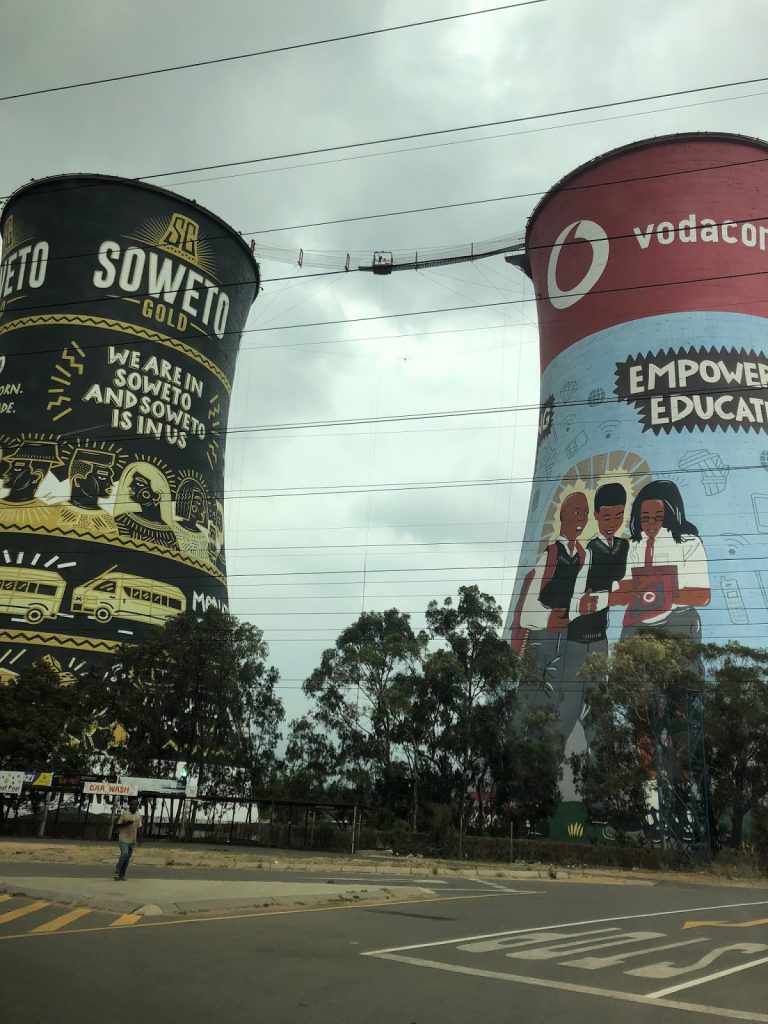
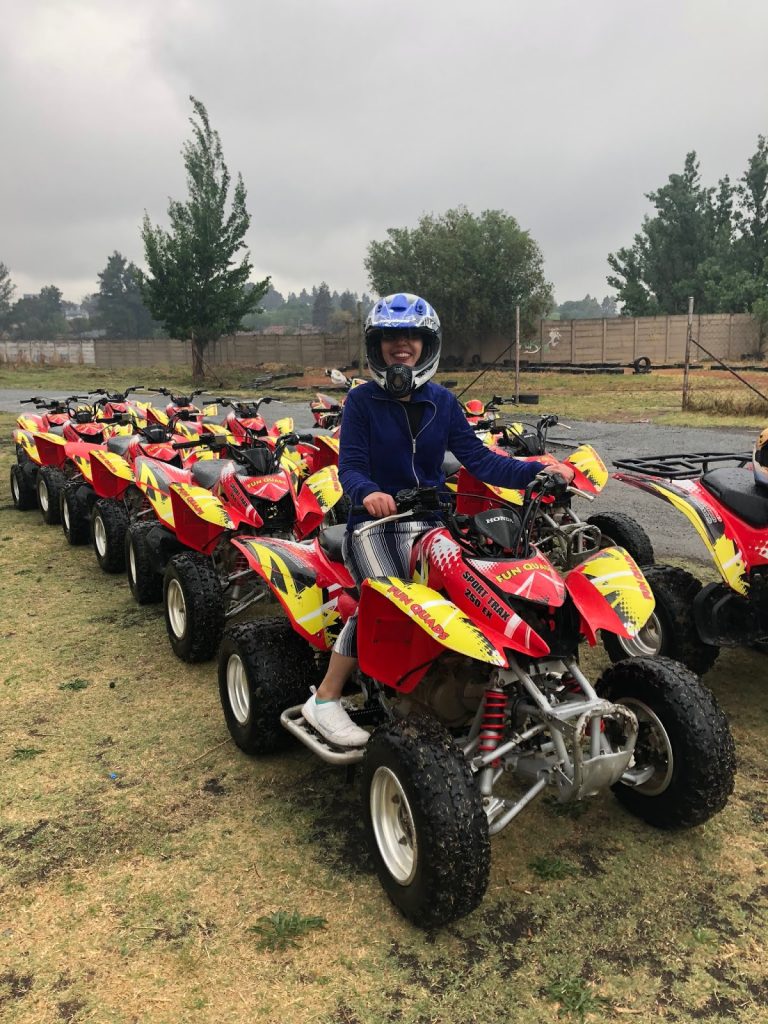
Dinner and drinks in Sandton
For everyone who believes it is unsafe to be out in Johannesburg post sunset must really come and experience the vibe in Sandton City. This commercial business district is thronging with high end shopping malls, bars and eateries and has been labelled as the ‘richest square mile in Africa.’ You can have a delicious meal without burning a hole through your pockets at one of the fabulous restaurants located at Nelson Mandela Square
What I’ve Learnt: Just like most cities, Joburg too has areas that may be considered ‘unsafe’ by a few. But most of the city is inviting and friendly even at night, and as long as you’re cautious about your safety (like you should be while travelling in any foreign country), I don’t see anything going wrong.
24 Hours In Durban
Durban – the largest city on the east coast of South Africa, the busiest port in the country and home to most number of Indians outside of India. But none of these reasons are why I fell in love with the city. I fell in love because of the laid back vibe it exudes right from the chilled out beaches, to the sub tropical climate extending most of the year, to the happening night life on Florida Road. In fact the street with it’s smattering of art deco buildings and pubs brought back so many Miami memories for me. The 24 hours we had in and around Durban were just not enough, but here are some ideas to help plan your time in the city.
“First they ignore you, then they laugh at you, then they fight you, then you win.”
Mohandas Karamchand Gandhi
A Patriotic Morning in Pietermaritzburg
Technically the town of Pietermaritzburg is an hour away from Durban, but I’d strongly recommend you make a quick pitstop as a part of your itinerary. The reason? To visit one tiny little, colonial railway station. The very same railway station where Gandhi was forced to spend the night after being thrown out of a train. His crime – he was a person of colour or a ‘Non White’ sitting in a ‘Whites Only’ compartment. This incident is believed to sow the seeds of ‘satyagraha‘ – a non-violent movement against racial discrimination in Gandhi’s mind, and therefore paved the pathway for India’s independence movement.
A small section of the station houses a display that is dedicated to the life and time of Gandhi in South Africa and the incident in particular. As I ambled around the station which seems to be stuck back in time, I couldn’t help but feel overwhelmed with the thought that had this particular incident not occurred at this very same station many years ago, the fate of our country would’ve been entirely different. At that moment I was taken over by this feeling of patriotism, an intensity that I had never experienced before. This railway station and that incident forged a beautiful connection between India and South Africa, creating a bond that would last forever, a spot that will forever be known as the ‘birthplace of Satyagraha.’
Want to feel a tad bit more patriotic? Drive past the picturesque Pietermaritzburg cricket ground – one of the only two cricket stadiums in the world to have a tree growing within the boundary. Any cricketer who scores a century of takes a five wicket haul is requested to plant a tree at the ground, and our very own Sachin Tendulkar has a tree to his name.
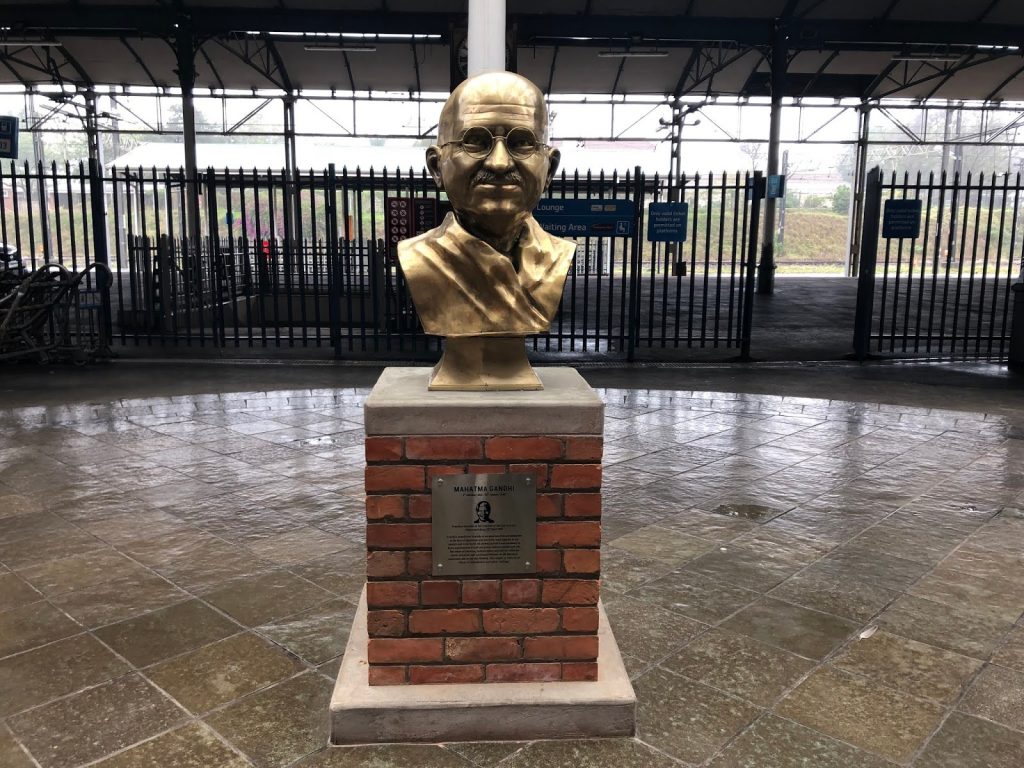
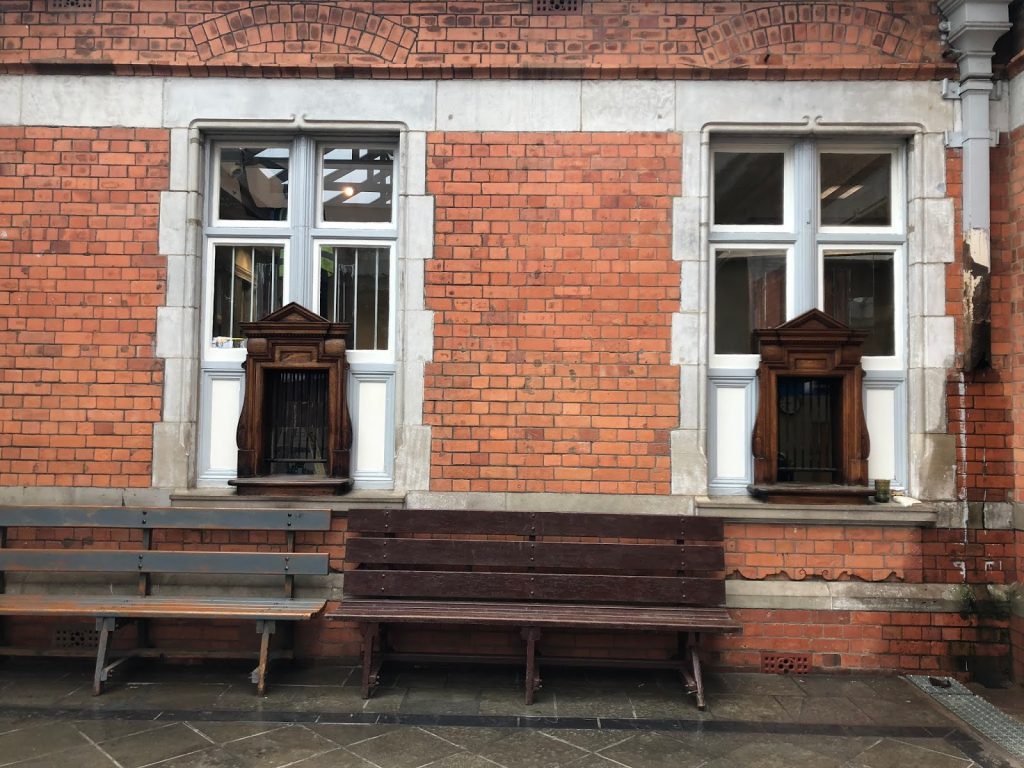
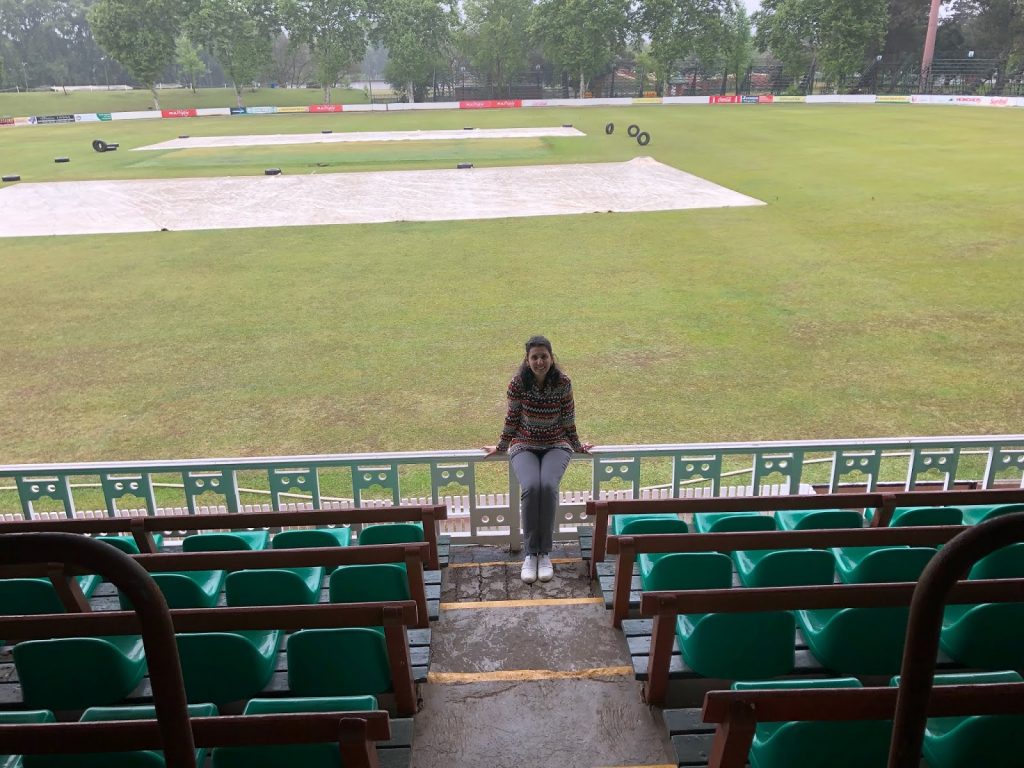
Bunny Chow for Lunch
You can’t come to Durban and not indulge in a ‘Bunny’. The Bunny Chow is nothing but a loaf of bread that is halved and scooped out, and filled with a hearty, meaty curry within. Believed to have originated by South Africa’s Indian community during Apartheid because they were not allowed into restaurants. The scooped out loaf of bread became an ingenious way of devouring your curry on the move, not to mention an extremely filling meal for all the migrant workers who spent the day toiling on the sugarcane fields.
The Bunny I gobbled up in Durban tasted a lot like home with it’s robust flavour, extremely well cooked meat, and super generous portion sizes. Surprisingly, the curry was a lot spicier than the Bunny Chow I’ve tasted back in Mumbai. Don’t be afraid to get your hands down and dirty, there’s no prim and proper way to be eating this. My favourite part? The moist bread base at the end that has soaked up all the curry and meat flavours. I’ll be dreaming of that for years to come.
Pro Tip: Though you can get a decent Bunny Chow anywhere in the city, I’d recommend trying House of Curries on Florida Road.
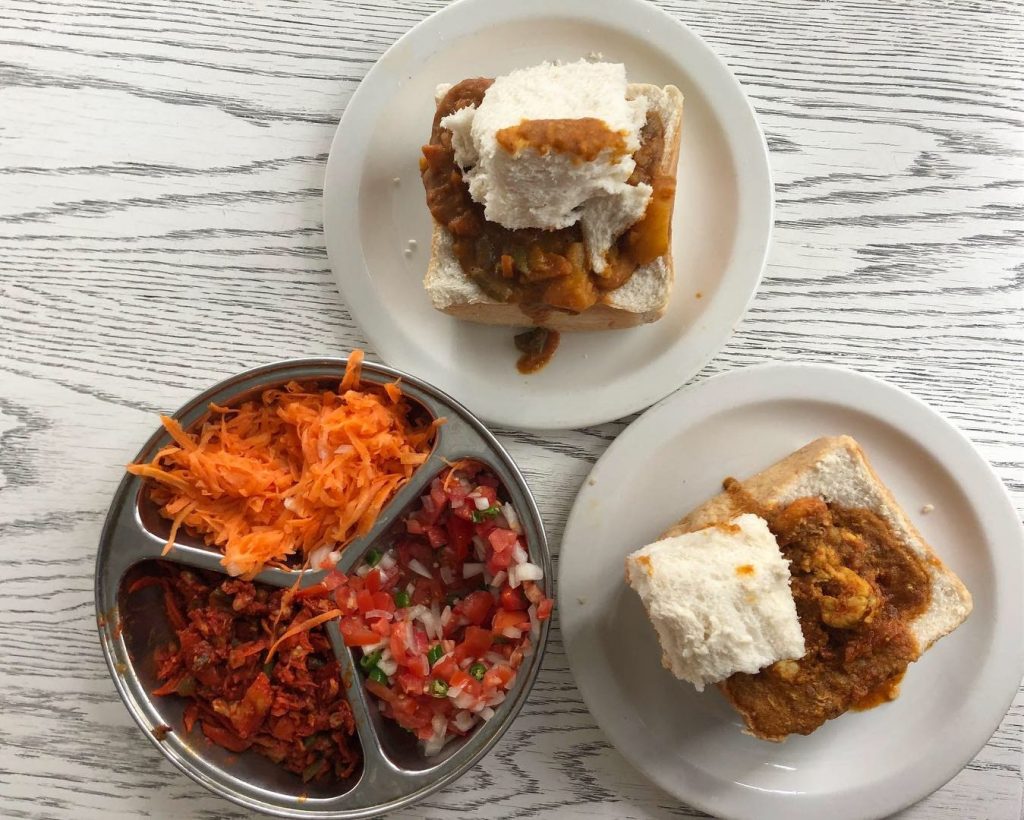
Shop for Souvenirs at Victoria Street Market
Brush up on your bargaining skills because you’re going to be needing them at one of Durban’s oldest markets – the Victoria Street Market. This indoor market has over 200 locally owned shops selling everything from traditional African artwork and clothing, to beaded jewelry, to Indian spices, to brassware and a lot more.
Recommendations: Brightly coloured Kaftans, traditional Zulu masks, delicate beaded jewellery
Pro Tip: Keep an eye out for original African prints and art work. A lot of the clothing looked like it was imported from Asian markets and I wouldn’t recommend purchasing them.
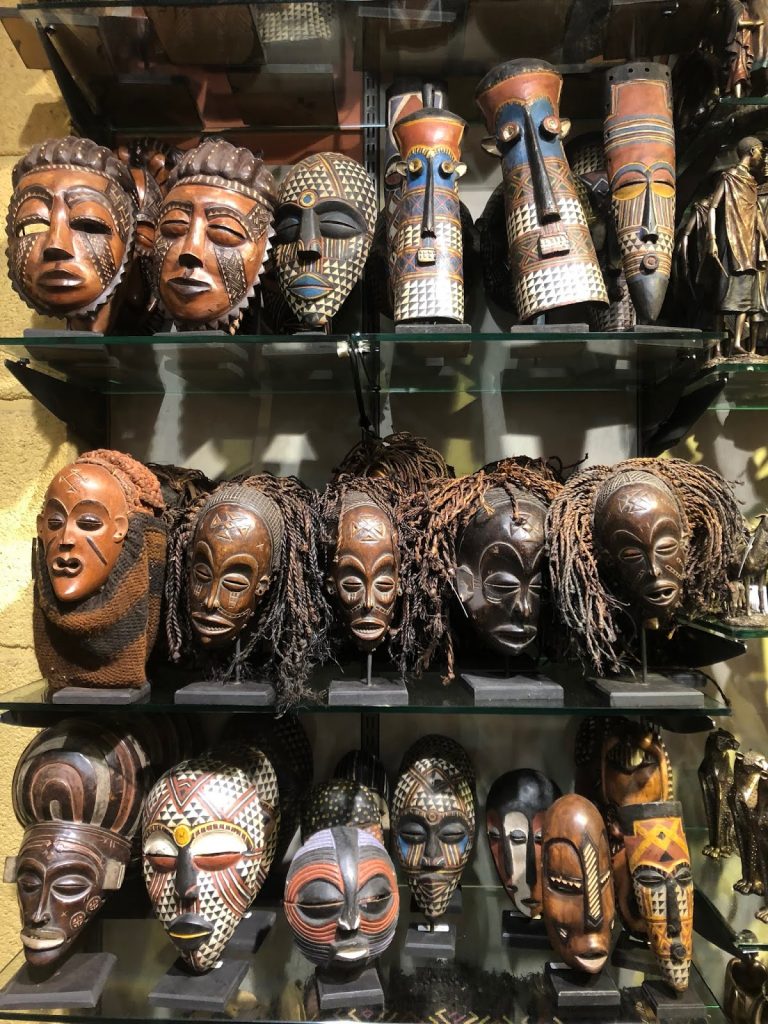
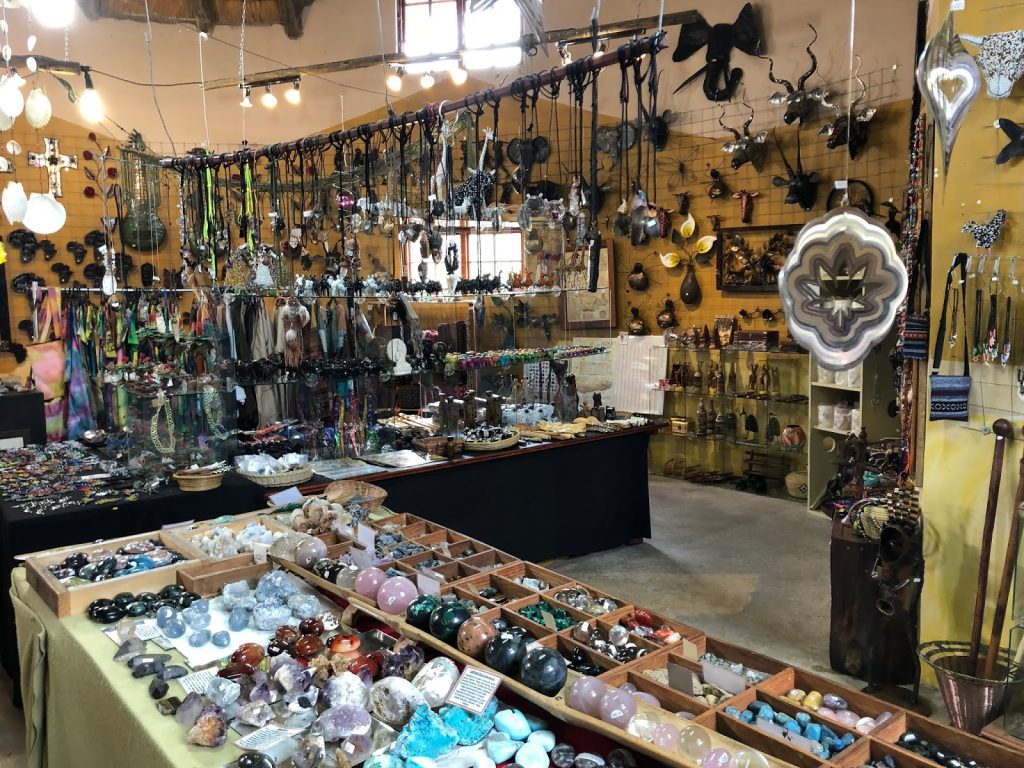
Check into the Fairmont Zimbali
A holiday resort located between a forest reserve and the shimmering Indian Ocean, close to the cosmopolitan city of Durban, complete with a 18-hole golf course and a private beach – that’s the Fairmont Zimbali! We were transported into a whole different world filled with greenery and serenity as we drove past the property’s gates; not to forget the view of the ocean in the distance. Unwind after a hectic day at any one of the five pools on the property, sipping on a cocktail as the sun sets or simply laze away on the beach.
Fun Fact: There have been plenty dolphin and whale spottings on the property. The Fairmont team even arranges dolphin watching, scuba diving and deep sea fishing tours on request.
For more information on the property click on the link here.
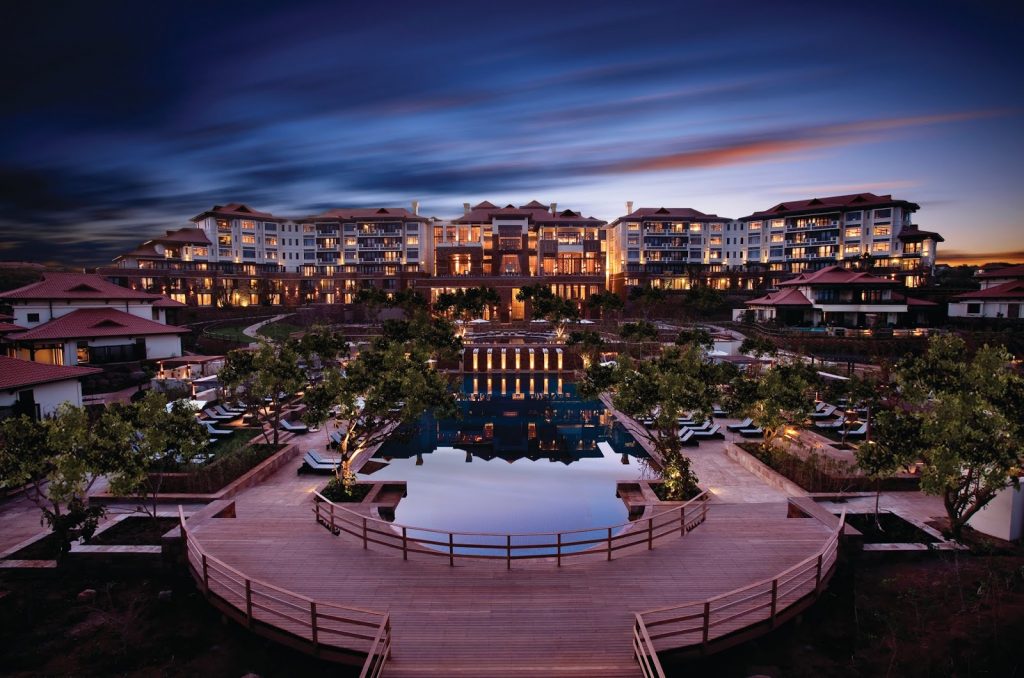

Read more about my love affair with South Africa in my upcoming posts. Stay tuned!
(My trip to South Africa was hosted by South Africa Tourism. As always, the views are unbiased and entirely my own.)

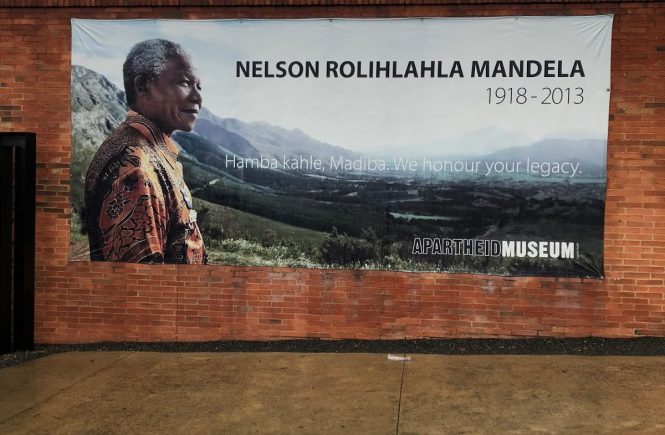



9 Comments
Years ago I was staying in Joburg and this post made me nostalgia. You capture city favorites beautifully.
So glad to read this Pragnya. Joburg is such a beautiful city. I can only imagine how much you miss it.
Such a descriptive post. You really write so well
It was so enjoyable reading your post to learn and appreciate more about these two famous cities and the incredible history they both hold. I never knew that Durban has the largest population of Indians outside of India and that rail station that had that awful incident with Ghandi all those years ago. The Soweto township is another fascinating area of history where we need to learn from the events of history. I am really looking forward to reading the next instalment of your experience in South Africa.
Great post and very informative. Looking to visit next and some great points. Thanks
Thank you mom. (I think you're a bit biased. LOL)
Thank you so much. I really enjoyed going through your blog as well. Your images are stunning!
Both Joburg and Durban have such a dynamic past – this post is simply the tip of the iceberg. Thank you for the appreciation 🙂
Good information, Every Traveler Needs to read this helpful guide, and i hope your post will help traveler.